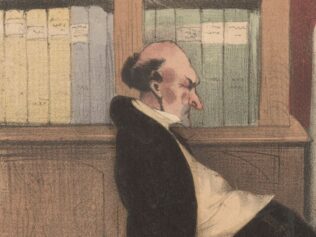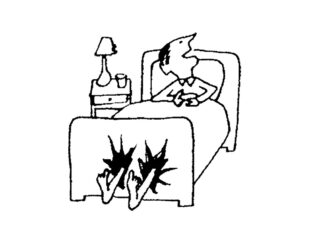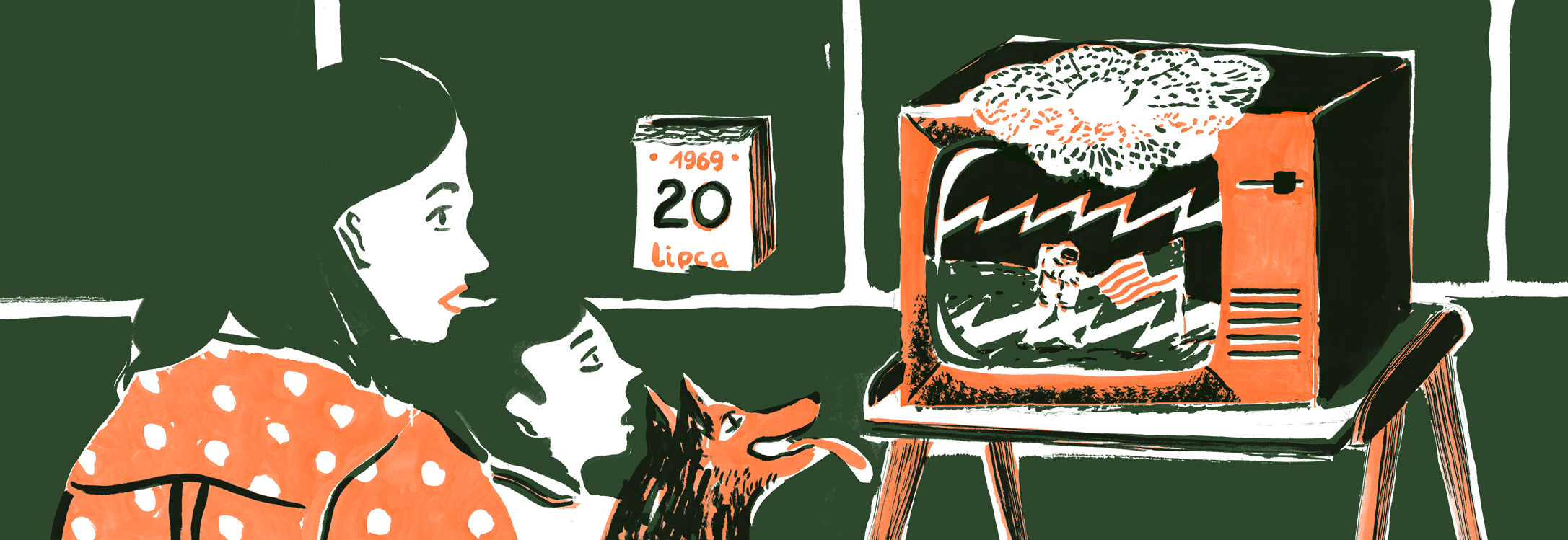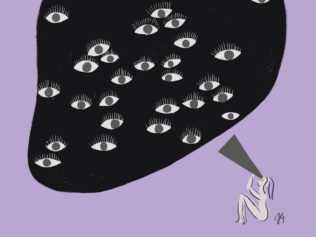
Its gravitational pull causes the ocean’s tides to ebb and flow; it has been responsible for a number of musical compositions, paintings, and literary works—as well as the admission of unwell people to mental asylums. The moon has a clear influence on humanity, but how much of what we believe about it is actually true?
The moon is as dreamlike as reality. An argent secret that pulls on the seas and breeds gods; inspires art, empowers nocturnal life, keeps the Earth’s time, counterbalances survival, and whose pale fire History’s eyes have watched ceaselessly.
Sometimes we can even see its faint shape during the day, such is the stubbornness of its reflected light and the peculiarities of the lunar cycle. Like a half-pearl, it hangs neighborly: beyond the Earth’s exosphere in the profoundly sublimated angst of interplanetary space. Treasured as the poetry of light, the moon mediates between dusk and dawn with a kind of refrigerated, fingernail charm.
But it has always been mythologized. As with many traditions, there is always something anthropocentric about it. The ancients solicited the moon for medicine, guessed what its changing phases meant to the body, and narrativized the lives of lunar deities. The mythos of the moon stretches from lunacy to lycanthropy, the menstrual to the tidal.
The Lunar Effect
Faith in the moon’s influence on sickness and health has always persisted in fabular belief and archaic medicine. It has been linked with all manner of human behavior and biology—insomnia, increased violent behavior, changes in mental health, and associations with menstrual cycles. While some of these ideas remain in the annals of history or committed to the realm of superstition, others might have some scientific basis.
Moonlight is not always a source of enlightenment, though. For thousands of years, physicians, scholars, and healers have believed in the bridge between the mind and the moon. Hippocrates, “the father of medicine,” claimed in the fifth century BCE that “one who is seized with terror, fright, and madness during the night is being visited by the goddess of the moon.”
Lunar phases were also used by 16th-century physicians to determine how the moon might affect their patients. Because early theories also connected the Earth’s satellite to the movements of tides, early modern doctors believed that it also governed the flow of blood in the veins. Bloodletting was therefore recommended during specific waxing phases, while the full moon exacerbated feverish symptoms. Astrology in Renaissance medicine was closely linked to contemporaneous beliefs in humorism and the imbalance of bodily fluids: black bile, yellow bile, phlegm, and blood. Stars and celestial bodies like the moon could be consulted to diagnose and explain illnesses—or so it was thought.
“It is the very error of the moon. She comes more near the earth than she was wont. And makes men mad,” rails Othello, the eponymous figure in Shakespeare’s tragedy. But how much gravity and truth is in this accusation? Biologists and psychologists, astronomists and astrologists have all researched the putative “lunar effect”—an unproven set of correlations between the stages of the moon and behavioral or physiological changes in some living creatures on Earth. What exactly have they established about the possible link between the lunar cycle and human behavior?
In 2006, Professor Michał Zimecki of the Polish Academy of Sciences published a scientific literature review entitled “The Lunar Cycle: Effects on Human and Animal Behaviour and Physiology” in which he analyzed various studies on sublunary activity. “The lunar cycle has an impact on human reproduction, in particular fertility, menstruation, and birth rate,” Zimecki concluded. “Admittance to hospitals and emergency units because of various causes (cardiovascular and acute coronary events, variceal hemorrhage, diarrhea, urinary retention) correlated with moon phases,” he added. “In addition, other events associated with human behavior, such as traffic accidents, crimes, and suicides, appeared to be influenced by the lunar cycle.”
However, his research also conceded that a number of reports found that there was in fact zero correlation between the moon’s cycles, reproduction, and hospital admissions. Crucially, he could not explain any rational reason or exact mechanism for the link and suggested further exploration into this kind of biorhythm was necessary. Other studies have found a lack of evidence to support an association between lunar phases and increased violent behavior[1]; scratching beneath the surface of moonrock appears to be an impenetrable task. But this does not quell the persistent faith in moonlight mythology.
While some animals and organisms do exhibit observable lunar-cycle patterns in their behavior, there is no incontrovertible proof for its effect on human biology or mental health. Nonetheless, some studies are letting in little rays of light. There might, for example, be evidence to support the persistent theory that the full moon negatively impacts sleep.
Chronobiologists in the USA have suggested that this popular belief may be based on a time before electricity, when the moon was the only nocturnal light source. Their 2021 study suggested that “moonlight likely stimulated nocturnal activity and inhibited sleep in preindustrial communities and that access to artificial light may emulate the ancestral effect of early-night moonlight.”
Likewise, in 2014 a sleep study led by researchers in Hungary used polysomnography to analyze the relationship between lunar phases and the sleep characteristics of participants. Discovering that several sleep parameters were impaired during a full moon, especially among women, its results were “consistent with a recent report and the widely held belief that sleep characteristics may be associated with the full moon.”[2]
These scientific findings perhaps show a plainly observed fact: that the moon influences the Earth and its denizens. But this was already clear. What we have yet to consciously understand is whether it does so medically, and why the moon captures people’s sense of wellness with such force. While the silver croissant in the sky might have influenced how humans have kept time, lit up the arts, and given guidance across the seas, it does not necessarily cause moon-sick madness in the mind—not anymore, at least.
Are We All Lunatics?
The word “moonstruck” is used to describe the apparent phenomenon of being affected too strenuously by the moon; it usually refers to those who are lovesick and disturbed into dreamy, irrational, and romantic sentimentality. The word itself was putatively coined in English by John Milton in his 1667-1674 magnum opus, the blank-verse epic poem Paradise Lost. There, inked in Book XI, a litany of woes of Adam and Eve’s original sin includes “demoniack phrenzy, moaping melancholy and Moon-struck madness.”
This specific form of madness—derived from the Latin lunaticus—foreshadows later institutional ideas of “lunacy.” The term “lunatic” originally described someone affected by moon-induced periodic insanity—it later became the general legal term for an individual of unsound mind.
Before the state started to take more responsibility for mental health issues, the trade in lunacy abounded in the madhouses of 18th-century Britain. The Lunacy Act of 1845[3] was part of a host of later legislation that formed mental health law in England and Wales in the mid- to late 19th century. While the word “lunatic” ostensibly seems inappropriate to our modern sensibility, the Lunacy Act actually advanced the idea of changing the status of mentally ill people to patients requiring care. Prior to the Act, “the criminally insane” were committed to the abject indifference of asylums.
There were, however, forms of mental asylum across continental Europe and as far as Constantinople and Cairo towards the end of the 19th century. Although those institutions persisted, in Britain the Mental Treatment Act 1930 eventually changed the legal term from “lunatics” to “person of unsound mind,” replacing “asylum” with “mental hospital” as part of its reformist agenda. That lunacy was the most commonly used term for insanity in the 19th century speaks volumes about the ways in which the moon has been almost thoughtlessly ingrained in language and law.
The supernatural figure of the werewolf brings together the cultural histories of the moon, superstitions, and the idea of lunacy. Global folklore is replete with legends of murderous shapeshifters or lycanthropic madmen hunting innocent mortals through the wilderness of the world. In some accounts, however, werewolfism peaks during a supermoon when the lunar body is at its perigee and thus appears closest to Earth.
The full moon might also have become associated with werewolves as a result of the shaky grounding of another myth: that wolves howl at the moon. Despite popular belief, there is no lunar-lupine relationship. In fact, their howling simply has a communicative function: to assemble the pack before and after hunts, to warn other wolves of danger, to locate each other at long distances and sometimes when pursuing prey. It is only because they are nocturnal predators—hunting and howling by the watch of the moon—that they are associated with it at all. Despite this, the first full moon of the year in January is still known as the Wolf Moon, following use of the term by the Indigenous Algonquin people in Canada to refer to packs of wolves howling amid the frozen depths of winter.
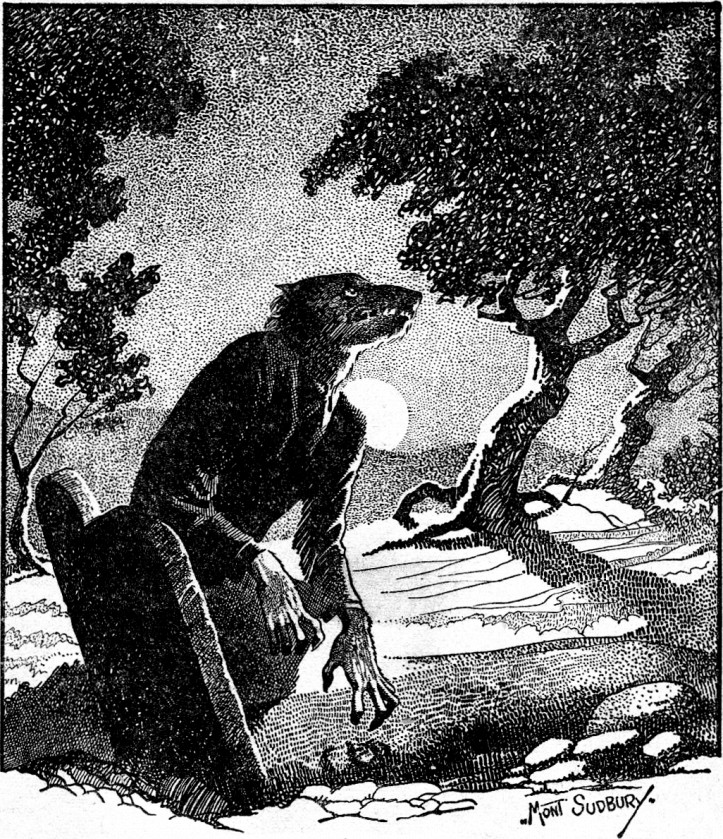
Silver Tides
The moon is not just a ghostly galleon, it is also a life-sustaining anchor. Without its gravitational influence moderating the wobbling tilt angle of the Earth’s axis, our planet’s climate would be far less stable and hospitable. A moonless Earth would be turned upside down—almost literally. The overwhelming gravity of the sun or Jupiter could bring an end to seasons, drastically disrupted tidal movements would wildly upset global temperatures, and a lack of moonlight would threaten ecosystems and nocturnal animal predation. While the ancients may not have been climatologists, they would have understood that the moon represents life.
The moon’s gravitational pull on the Earth is well-evidenced and difficult to deny; it represents the main cause of the rise and ebbing of ocean tides. It causes water to bulge on the sides of the Earth closest (where the pull is stronger) and farthest (due to the counteracting force of inertia) from the moon. While there are other peripheral influences—including the sun—it is essentially the presence of the moon which generates this oceanic redistribution and tidal bulges.
The lunar phases also sway the scope of tidal changes. It is when the satellite wanes to a new moon and waxes to a full moon that the deepest impacts are felt on high and low tides. Twice a month, during these phases, the Earth, sun, and moon are all more or less in alignment and average tidal ranges are somewhat greater. These “spring tides” occur because the solar tide and lunar tide coincide with each other, combining their gravitational pull and heaving the oceans’ tidal bulge that bit further. High tides and low tides peak during these periods. The other type of main tide is known as a “neap tide” and occurs between spring tides when the first and last quarter of the moon appear in the sky. Here, normal tidal ranges are reduced; the moon is facing the Earth at a right angle to the sun, so their respective tide-causing effects are essentially resisting each other.
But tides are not the only marine phenomenon triggered by the moon. On the Great Barrier Reef mass annual spawning of coral occurs under the moonlight. Billions of coral release their eggs and sperm into the sea on a scale so vast and synchronized it can be seen from space. According to Tom White, Senior Curator in Non-Insect Invertebrates at the Natural History Museum, “the corals time their spawning according to several factors, including temperature, salinity, and availability of food […] but it always occurs between October and December and right after a full moon.”
The moon generates tides by virtue of the fact that oceanic waters can move more or less freely around the surface of the globe—it is a relatively moderate force acting on titanically-sized bodies of water. When it comes to human bodies, there is a fleshy vessel that keeps its lower mass of water contained. Yet Aristotle believed that the moistness of the mind—the brain’s high water content—meant that it could be affected by the changing phases of the moon and its gravitational pull. Despite the acrobatics of logic, the idea that brain fluids had tides evoked associations with the full moon precipitating mental illness, seizures, and wild behavior. More recent scientific studies, however, have found no anchoring link between mental health and lunar cycles.
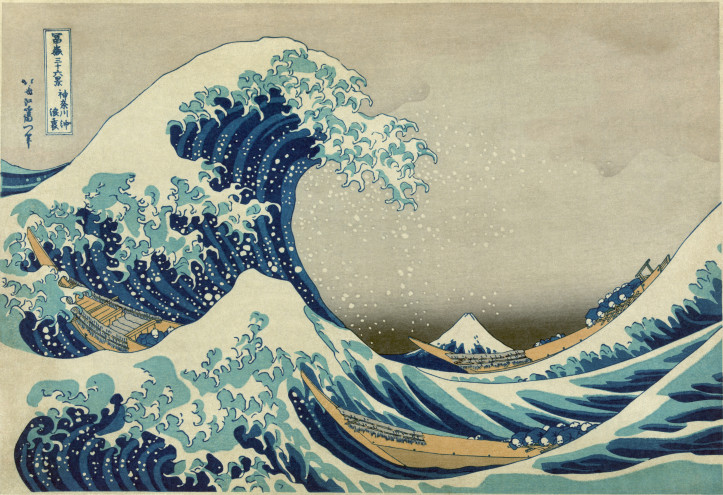
The Moon as Allegory
Orbiting the Earth with literal eccentricity, the moon also appears imaginatively eccentric to us. Despite feeling like a universal symbol, it represents different shades of meaning to different cultures. And the idea that every society has harbored a desire to fly to it belies the historical fact that the idea of “space” as an infinite but traversable region beyond the firmament did not emerge until after the 16th century—that discovery was iconoclastic.
Indeed, humanity dubbed it “the” moon because it was only in 1610 that Galileo Galilei discovered any others—now known as the Galilean satellites and Jupiter’s largest moons: Io, Europa, Ganymede, and Callisto. In the boundaries of the solar system, other planets either have none (Mercury and Venus) or multiple moons (the most being Saturn with eighty-three).
Maybe there is also a crucial philosophical point here alongside the scientific one: the moon and Earth exert a gravitational pull on each other. The moon is exclusively the Earth’s satellite. Perhaps the fact that it is the planet’s sole moon creates some of the mystique that surrounds it?.
The moon’s significance is at times incredibly lucid. In The Sacred & The Profane, Mircea Eliade—one of the 20th century’s most influential and erudite historians of religion, religious symbolism, and myth— writes that:
It was lunar symbolism that enabled man to relate and connect such heterogeneous things as: birth, becoming, death, and resurrection; the waters, plants, woman, fecundity, and immortality; the cosmic darkness, prenatal existence, and life after death, followed by a rebirth of lunar type (“light coming out of darkness”) ; weaving, the symbol of the “thread of life,” fate, temporality, and death; and yet others. In general most of the ideas of cycle, dualism, polarity, opposition, conflict, but also of reconciliation of contraries […] were either discovered or clarified by virtue of lunar symbolism.[4]
Earlier, he echoes the idea that lunar rhythms may have been part of the synthesis between early humans and ideas of the cosmic. The moon is consistent in its moving phases, like a mutant promise: it appears to change, but forever reveals its familiarity again with gibbous indifference. Its phases can be interpreted, anthropically, as one way in which early humans understood birth and death and their state of survival in the universe.
Eliade goes on to say that a “metaphysics of the moon” might channel a certain set of natural truths: growth and decay, death and resurrection. Lunar symbolism reflects the light of religion, insofar as it represents the cycle of dying and being rebirthed.[5] The moon is a tombstone—a lifeless rock orbiting the Earth—but, it is at once a memento mori and an object that makes life on Earth possible.
According to acclaimed LA astrologer Chani Nicholas, the moon “represents our needs, wants, and cravings. It represents our changing emotions, our body, the body of the person who birthed us, how caregivers cared for us, and the stories of our past and lineage.”[6] For her, the moon in the sky and the moon in someone’s chart both reflect the sun’s light, which is the astrological equivalent of one’s purpose in life. “[The moon] is the reflection of our soul’s experience in our body,” she writes, but the way in which she converts these ideas into critiques of a body-shaming culture shaped by misogyny, transphobia, classism, racism, and capitalism is quintessential of her practice. It is astrology on Earth.
Understood in a horoscopic sense, the moon also helps us make sense of our daily experiences and their manifestations. Astrologically speaking, it generally represents the home, belonging and support, and subconscious interiority. But it is interesting, too, that the moon always seems to be illuminated by traditional stereotypes of femininity.
In many cultures around the world there is an indirect, though sometimes overt, connection between the 29.5-day lunar cycle, fertility, and menstrual cycles. The basis of the idea might also be found in the etymological link between “moon and “menstruation”—the terms “menstruation” and “menses” originate from the Latin mensis meaning “month,” which in turn is rooted in the Greek mene meaning both “moon” and “month.”
Although scientific research on the link between the moon and menstruation has been inconclusive, according to a 2021 physiological study led by the initially skeptical Charlotte Helfrich-Förster, there may be some claim to its veracity. After analyzing the long-term menstrual records of participants, the results showed that some cycles longer than twenty-seven days “were intermittently synchronous with the moon’s luminance and/or gravimetric cycles.” They concluded that, “with age and upon exposure to artificial nocturnal light, menstrual cycles shortened and lost this synchrony. We hypothesize that in ancient times, human reproductive behavior was synchronous with the moon but that our modern lifestyles have changed reproductive physiology and behavior.”[7]
However in 2019 the period tracking app, Clue conducted a study in which they analyzed the data of 1.5 million users. According to their analysis menstrual cycles do not sync with the moon, even if they do sometimes coincide. “Looking at the data, we saw that period start dates fall randomly throughout the month, regardless of the lunar phase,” said astrophysicist and then Data Scientist at Clue, Marija Vlajic Wheeler. When it was conducted four years ago, its study of 7.5 million menstrual cycles made it the largest ever analysis of the relationship between menstrual cycles and lunar phases.
In pagan belief and movements such as Wicca and Druidry, the moon also appears caught between feminine and masculine qualities of fertility and growth. With so-called “moon magic” there is a belief that ritual witchcraft during the full and new moon can bring about psychological change through intention-setting meditation. While these ideas are often the source of some derision, it shows that some ancient beliefs around sacred lunar cycles have persisted into the modern world.
Eclipsing Gender
It was “one small step for [a] man, one giant leap for mankind” to land Neil Armstrong and Buzz Aldrin for a Selenic stroll in 1969. Here there is perhaps an irony in the way the moon has often seemed to be feminized in many mythological cultures. What explains the kind of radiant, sensual, and fay mysticism that seems to be attributed to it?
Much moon worship revolves around female divine embodiment and the assumption that the moon is somehow feminine. Take, for instance, the Greek and Roman goddesses Selene and Luna, the Neopagan “Triple Goddess,” the Maya moon goddess, or the Incan “Moon Mother” Mama Quilla who oversaw marriage, menstruation, and maidens. However, this is not always the case: in Japanese, Hindu, Norse, Mesopotamian, and ancient Egyptian mythologies the moon is a male god and usually a predominant figure of the pantheon. Yet there does not seem to be as much of the sun-reflecting passivity in the masculine moon as implied by the feminine moon, a gentle queen of the night.
The ancient Greeks worshiped Selene—also known as Mene—as the goddess of the moon who watched and lit the months. The daughter of Titans Hyperion and Thea and sister to sun god Helios, she is perhaps best known in Classical literature for her affair with the mortal Endymion. The Romans named her Luna (derived from the Latin lucere, “to shine”). Both Selene and Luna share the lunar chariot and are often portrayed with crescent moon horns. Luna lends her name to the word for “moon” in many Romance languages, showing how lunar phases and mythology instruct languages and therefore ways of being and behaving.
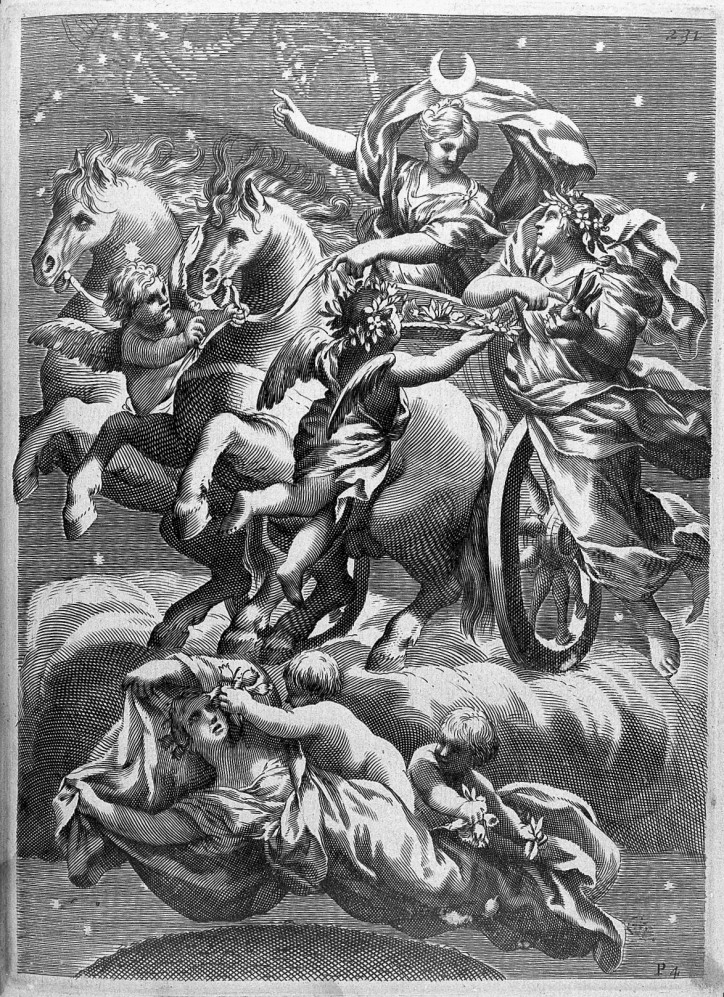
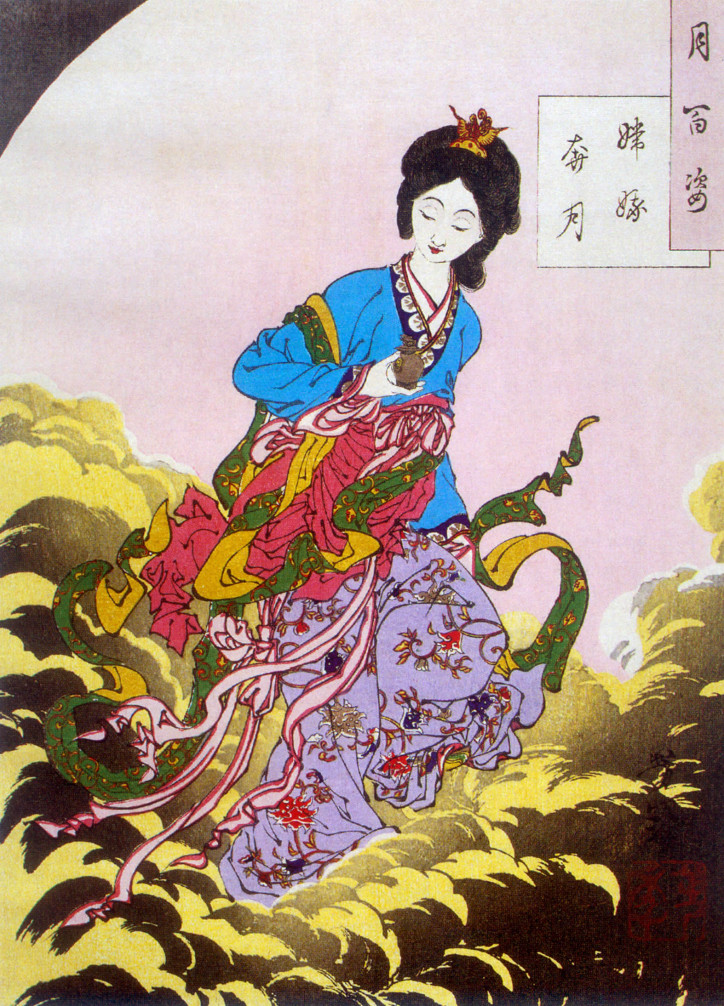
The moon goddess in Chinese mythology is Chang’e. She is depicted as a beautiful woman residing immortally in her lunar refuge, having fled upwards to the heavens after nobly taking the elixir of life that belonged to her partner, Hou Yi the Lord Archer. A hare often features in the legend and can be seen as Chang’e’s companion in traditional depictions of the goddess. She is celebrated during the important Mid-Autumn Festival (Zhongqiu Jie) on the fifteenth day of the eighth lunar month. With her full moon beaming like a silver sigil, lotus seed or red bean paste-filled moon cakes are eaten and shared together.
Chūnjié or the Spring Festival, also known as the Lunar New Year or Chinese New Year, celebrates the beginning of the new year according to the traditional lunisolar and solar Chinese calendar. The Hindu and Hebrew calendars are also lunisolar. Historically, many have set their store not by the sun, but by “lunations.” These lunar calendars—including the traditional Kọ́jọ́dá system of the Yorùbá people in West Africa, the Māori lunar calendar (maramataka), and the Igbo calendar in Nigeria—have thirteen months each consisting of seven weeks. The Hijri calendar, or Islamic lunar calendar, is still used by billions to mark Muslim holy days and observances.
The English word “moon” originates from Germanic sources, but also has an Indo-European root linked to the Latin metri, “to measure.” In Japanese, too, the kanji characters used for both “moon” and “month” are identical, and the moon gives its name to Monday in multiple languages. These linguistic orbits reflect the role the moon has played in measuring months and forming calendars. Calendars, months, and all manner of human timekeeping have their cradle in this celestial body’s waxing and waning. Whether proven or not, folklore and astrological indicators have also claimed value in planting crops according to lunar cycles.
The Last Quarter
In generating tides around the world, the moon has conducted an elemental rhythm that we have been listening to since a time before man-made music. The moonlight metronome has ineluctably shaped human behavior. Civilizations have risen and cascaded into history under its phases by circumnavigating its earthly custody; exploration is the brutal offspring of the tides. But by the forlorn light of the moon, we have also been inspired to create.
In music, it has constantly been the subject of serenades from down below: from Debussy’s “Clair de Lune” (meaning “moonlight”) and Beethoven’s poetically dubbed “Moonlight Sonata” to Brian Eno’s celestial ambience on “Apollo: Atmospheres And Soundtracks.” Audrey Hepburn’s sad simplicity eternalized the Mancini-Mercer-penned ballad “Moon River,” while its light has also been refracted in songs of many hues: “Blue Moon,” “Pink Moon,” and “Orange Moon.” When Frank Sinatra famously crooned his wish to be flown to the moon in 1964 his rendition was all but adopted by NASA’s Apollo space program: played out in 1969 on both the orbiting mission of Apollo 10 and on Apollo 11, which first landed humans on the surface of the moon.
If the dark side of the moon is not a bonfire for humanity’s ambition, then it might be the footprint of a dreaming lodestone. The moon—the brightest light in the night sky—is a pale beacon for the pining, mortal eye. But for a body that has reflected light for over four billion years, it is perhaps strange that it often represents enigma, evocativeness, and opacity itself.
Francisco Goya’s 1798 painting “Witches’ Sabbath (or El Aquelarre)” depicts a coven of witches surrounding a garlanded, caprine Devil under the baleful watch of the moon, which spreads the horizon in eerie moonlight and sky-studded bats. In a different phase, Éduoard Manet’s 1868 “Moonlight over the Port of Boulogne” (“Le Clair de lune sur le port de Boulogne”) shows the moon Impressionistically. The chiaroscuro drama of moonlight, over the harbor waters and through the boats’ masts, depicts the moon in a more prosaic, but no less mysterious, manner.
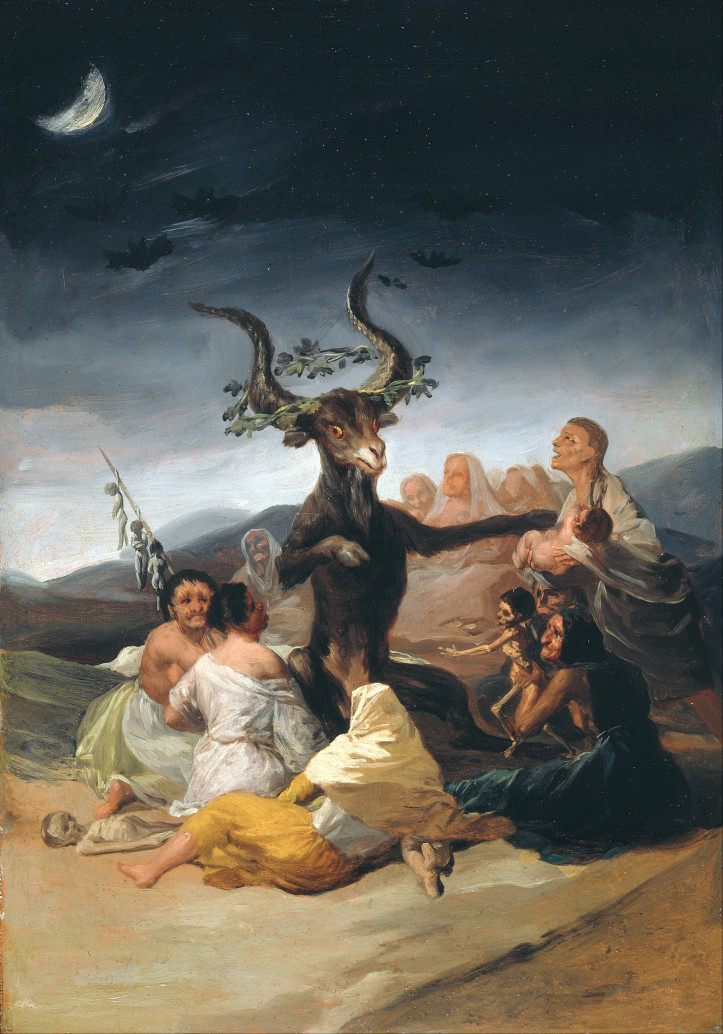
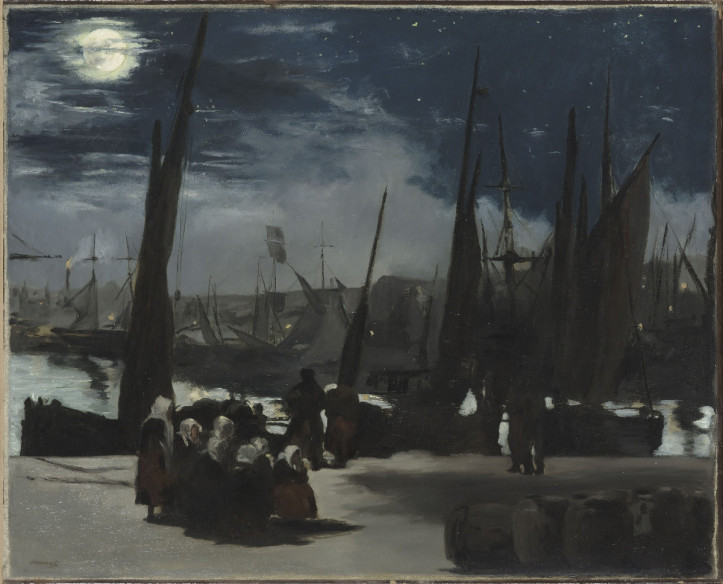
“The Mysteries of the Horizon” (“Les mystères de l’horizon”) painted by master Surrealist René Magritte in 1955, shows the moon in a different light. Three identical bowler-hat wearing men stand in a barren wasteland unfurled in blue twilight: above each figure hangs a waxing crescent moon. It is as if the moon is the measure of perspective, like a palimpsest is superimposed on time and space. Each besuited individual has its own moon, yet there is only one real moon for us to perceive. Perhaps also echoing antiquity, Luna, and the diva triformis, Magritte’s masterpiece could be a philosophical reflection on relativism and the universal, or, more simply, a portrait of the absurd paradox of living.
Something basic and sublime seems to force us all to stare back at the moon’s neutral glare. “We’re both looking at the same moon, in the same world. We’re connected to reality by the same line. All I have to do is quietly draw it towards me,” writes Haruki Murakami in the novel Sputnik Sweetheart. That universality perhaps speaks to the endemic mythologizing of the moon. In the unrequited love of Murakami’s protagonist lies the intensely human teleology of seeking purpose in a waning moonbeam.
Notes:
[1] S. Núñez, L Pérez Méndez, A Aguirre-Jaime, “Moon cycles and violent behaviours: myth or fact?,” “European Journal of Emergency Medicine” 9, no. 2 (2002), 127—130, https://doi: 10.1097/00063110-200206000-00005
[2] Csilla Zita Turányi et al., “Association between lunar phase and sleep characteristics,” “Sleep Medicine” 15, no. 11 (2014), 1411—1416, https://doi.org/10.1016/j.sleep.2014.06.020
[3] Danby B. Fry, “The lunacy acts: containing all the statutes relating to private lunatics : pauper lunatics: criminal lunatics: commissions of lunacy: public and private asylums: and the commissioners in lunacy: with an introductory commentary, notes to the statutes, including references to decided cases, and a copious index,” 1864, https://wellcomecollection.org/works/gtfj5qq4
[4] Mircea Eliade, “The Sacred & The Profane: The Nature of Religion,” trans. Willard R. Trask (New York: HBJ, 1957), 156.
[5] Ibid, 157
[6] Chani Nicholas, “You Were Born for This: Astrology for Radical Self-Acceptance” (London: Yellow Kite, 2020), 97.
[7] Charlotte Helfrich-Förster et al., “Women temporarily synchronize their menstrual cycles with the luminance and gravimetric cycles of the Moon,” “Science Advances” 7, no. 5 (2021), https://doi:10.1126/sciadv.abe1358





